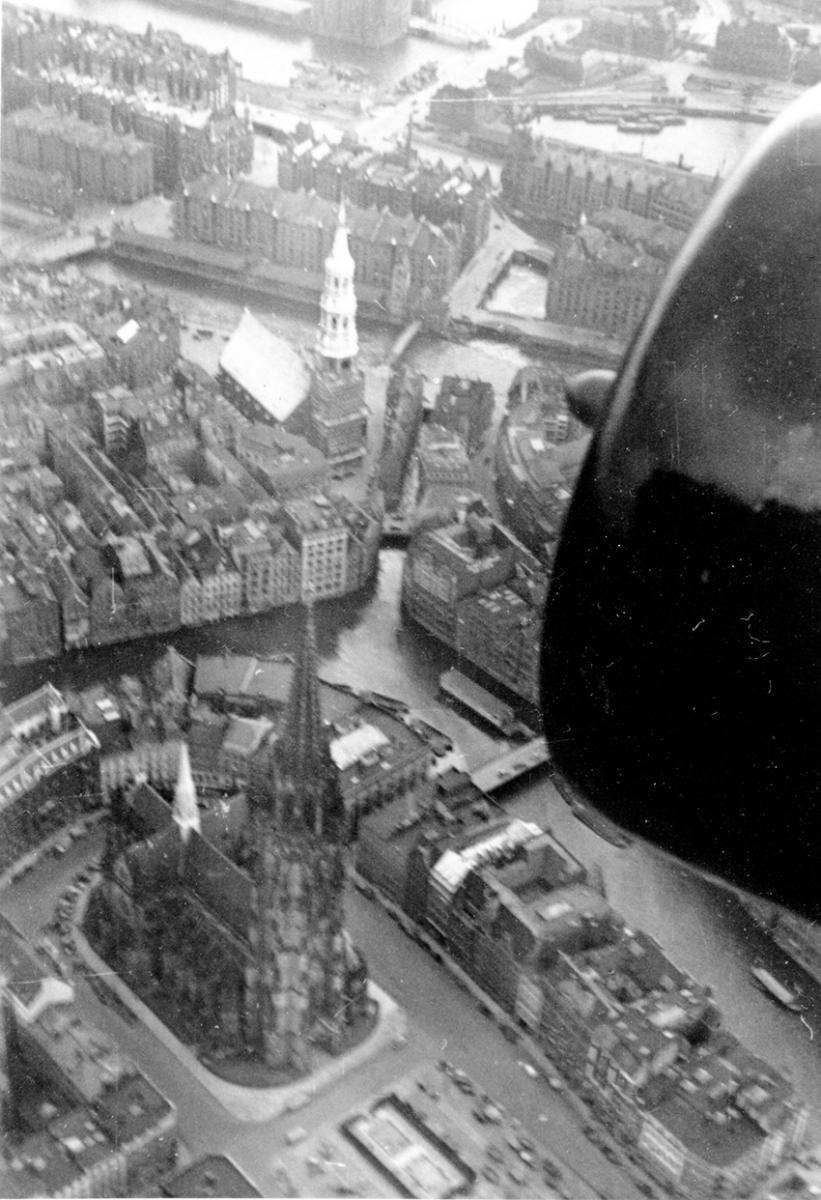Just after midnight on July 24, 1943, a bomb dropped on Hamburg – followed by one more, and then 10 more, and then 100 more, and then 1,000 more. For eight days and seven nights, the city was pummeled by aerial bombardment. Operation Gomorrah, as the Battle of Hamburg was codenamed by the Allies, was at the time the heaviest assault in the history of aerial warfare, carried out by the Royal Air Force Bomber Command and the United States Army Air Forces on the vital port city in northern Germany. When the conflagration ended and the smoke cleared, around 37,000 people were dead.

Image: Principal elevation of St. Nicholas Church, photographed in 1904, shows the spired Gothic Revival bell tower rise above a market plaza.
No building was spared the onslaught and firestorm. At the center of the city on the banks of the Alster, the tall and proud St. Nicholas Church took hit after hit. A church had stood on that spot since 1195, when the original wooden chapel was completed. In the 14th century, it was remade in brick, and completely rebuilt in 1874 following the Great Fire into a stately Gothic Revival cathedral designed by the English architect George Gilbert Scott. From 1874 to 1876, it was the tallest building in the world.

Image: An aerial view of St. Nicholas Church taken in 1939 (before Operation Gomorrah) from a Junkers Ju 52 transport aircraft. Courtesy: Ralf Klee.
During the raids of World War II, the same spired tower that for generations had lifted up and given hope to the masses, was used as an orientation marker for bomber pilots. It sustained heavy bombardment on July 28, after which the roof collapsed and the walls buckled. Although the basic structure remained intact, and reconstruction was still a viable option, it was decided to demolish the nave and focus on other rebuilding priorities after the war. By 1951, heaps of rubble were carted off to reinforce the riverbank.

Image: Modern view of the carillon bells, installed in 1993, within the ruins of St. Nicholas Church in Hamburg, Germany.
But the hollow tower and a small crypt were left unscathed, preserved to this day as a memorial against war and a museum dedicated to World War II, the air war over Europe, and its victims. In 1993, a 51-bell carillon was installed, which continues to ring out and invite the passerby to discover the remnants of St. Nicholas Church and to think on the unspeakable horrors of war.
Cover image: The destroyed St. Nicholas Church, left, rises above the ruins of Hamburg, Germany, in this aerial photograph captured by American reconnaissance pilots in May 1945, two years after Operation Gomorrah. Courtesy: Der Spiegel.

